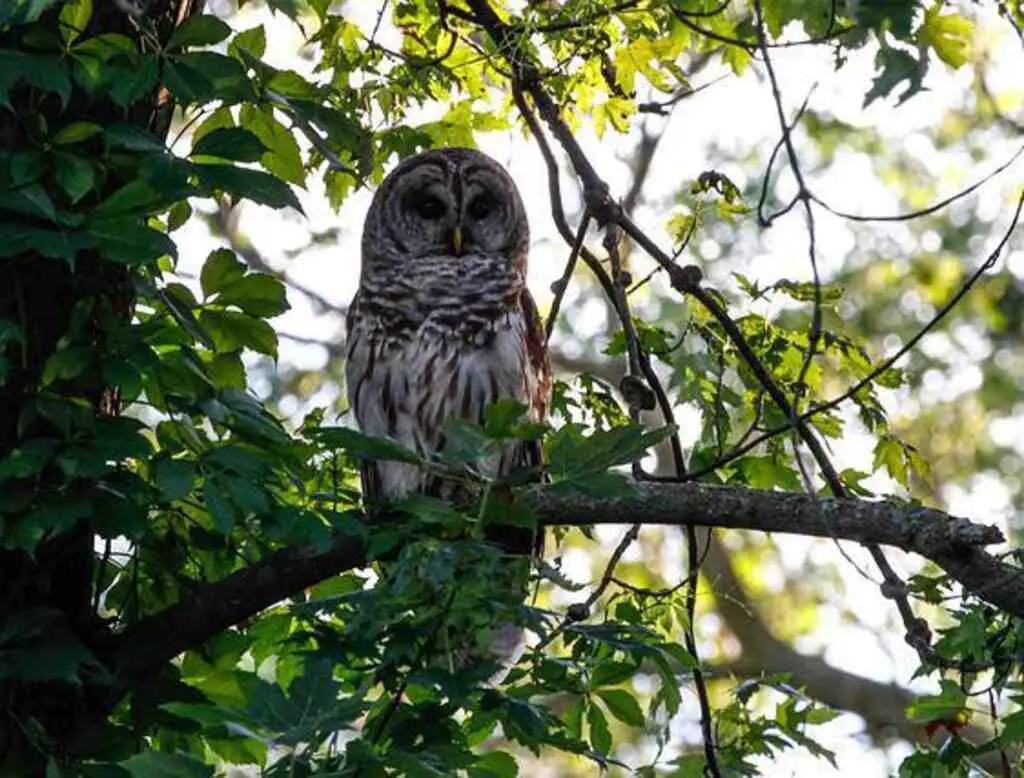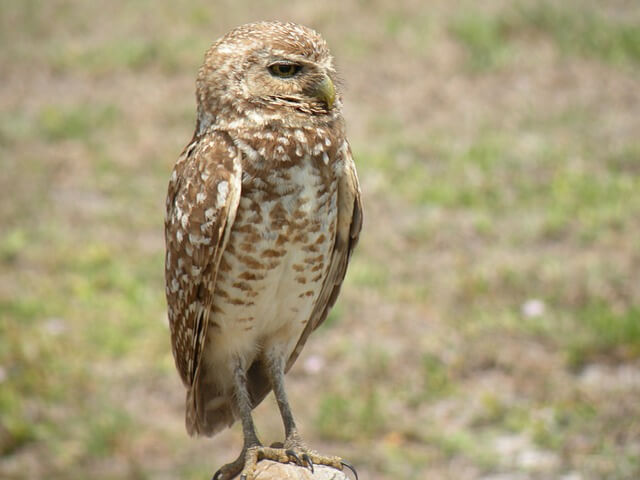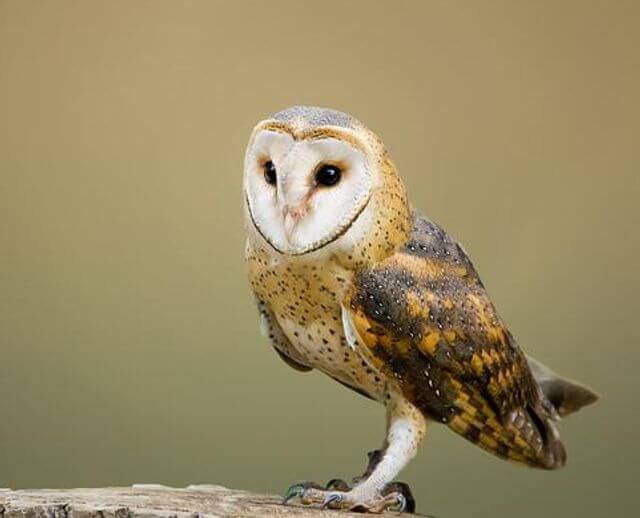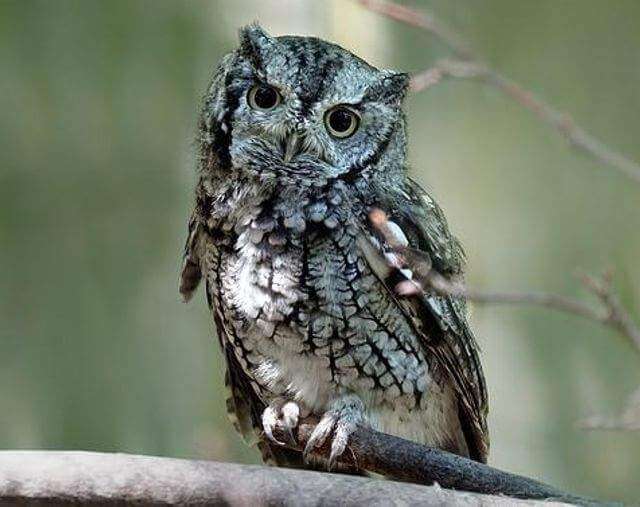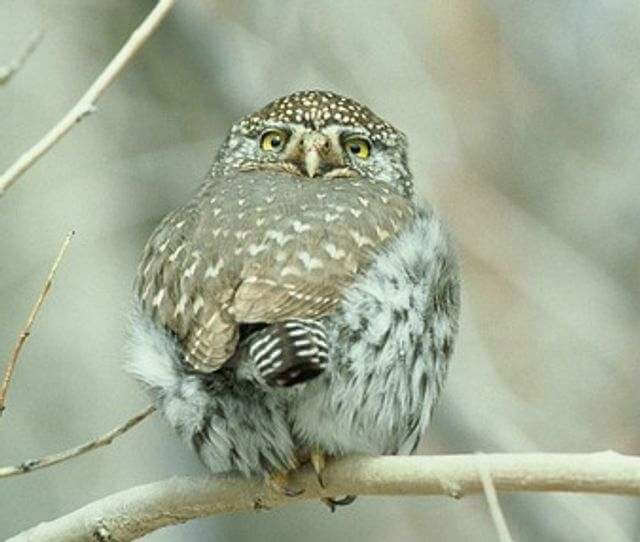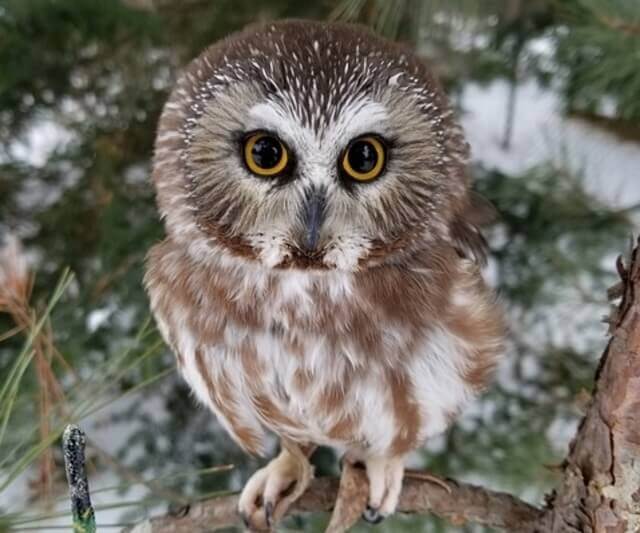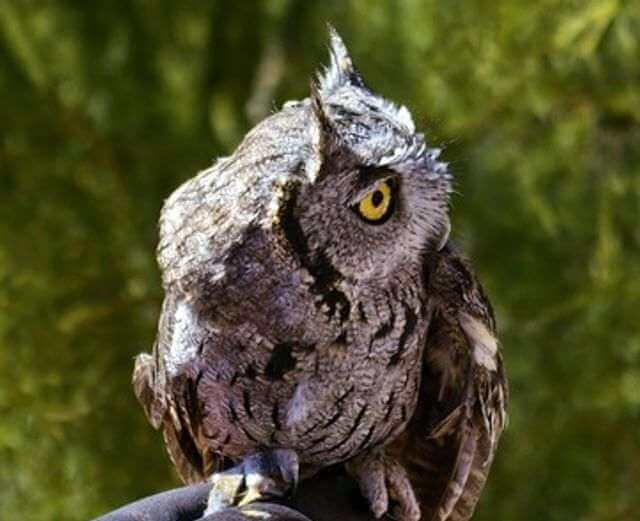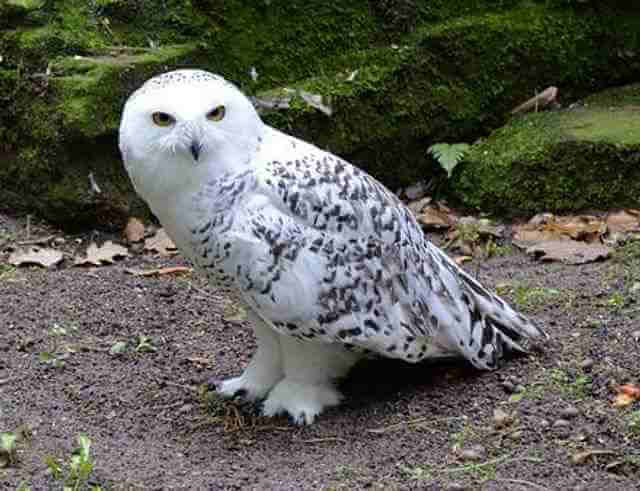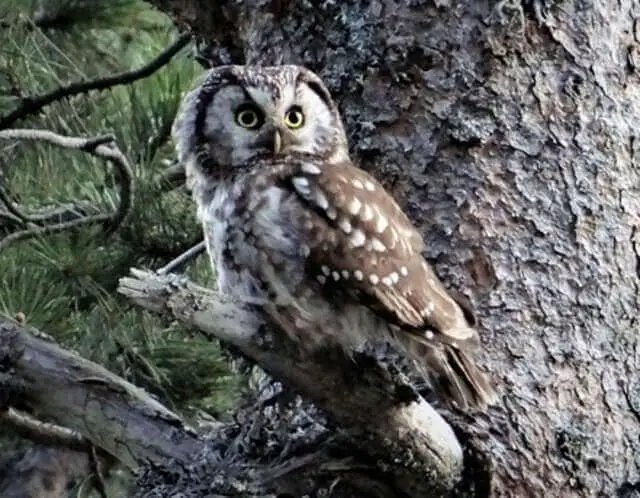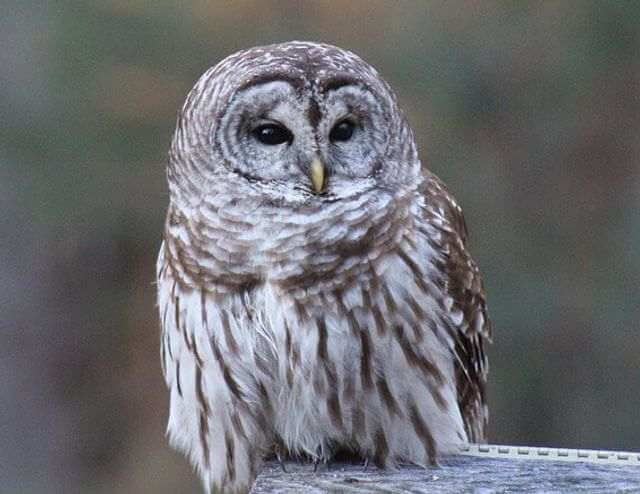Discover the intriguing world of ’14 Types of Owls in Colorado’, where these majestic birds of prey contribute to the state’s rich biodiversity. From dense forests to open plains, each owl species inhabits unique landscapes, showcasing their diverse adaptations and ecological significance. Join us as we explore their habitats, behaviors, and the vital role they play in Colorado’s natural environment.
Table of Contents
Types of Owls in Colorado
Great Horned Owl
- Length: 17.7-24.8 in (45-63 cm)
- Weight: 32.1-88.2 oz. (910-2500 g)
- Wingspan: 39.8-57.1 in (101-145 cm)
- Scientific Name: Bubo virginianus
- Frequency of Occurrence: 3.93% (Statistic by: eBird)
- Maps: Range Map – Sightings Map
- Sounds: Calls and Sounds
- Where To Find Them: Some locations in Colorado where you can see this bird are Mesa Verde National Park, Rocky Mountain National Park, and Breckenridge Ski Resort.
General Information: The great horned owl is a large bird that can be found in many parts of the United States. The owl is known for its massive size, its striking plumage, and its superb hearing and vision. The owl ranges across much of North America, from the tundra to the desert. It inhabits forests, open areas, and even urban areas.
The diet of the great horned owl includes a variety of animals and insects. In fact, this owl is one of the most successful predators in North America. Some common prey items include rabbits, squirrels, chipmunks, snakes, and other birds. The great horned owl also consumes large amounts of insects; these include grasshoppers, beetles, flies larva and caterpillars.
Handpicked Related Post: 35 Fun Facts About The Great Horned Owl (Detailed)
Burrowing Owl
- Length: 7.5-9.8″ in (19-25 cm)
- Weight: 5.3 oz. (150 g)
- Wingspan: 21.6″ in (55 cm)
- Scientific Name: Athene cunicularia
- Frequency of Occurrence: 0.7596%
- Where To Find Them: Burrowing Owls live in the coldest parts of North America, so it is no surprise that they are most common in Colorado. The state has a good number of protected areas where you can see them, including Huerfano County, the Rocky Mountains National Park, and the Mesa Verde National Park.
General Information: The Burrowing Owl is a small owl that lives in the open plains and prairies of North America. This owl is very adaptable, able to live in many different habitats, from forests to deserts. The Burrowing Owl feeds primarily on insects and other small animals, but it will also eat small birds and mammals if necessary.
Burrowing Owls are very territorial and will defend their territory against other owls or predators. They typically nest in burrows or under rocks, but they have been known to nests in cavities in trees or buildings. The Burrowing Owl has a slow rate of flight and can stay aloft for hours at a time while hunting.
Handpicked Related Post: Really Cool Burrowing Owl Facts That Will Amaze You!
Barn Owl
- Length: 12.6-15.8″ in (32-40 cm)
- Weight: 14.1-24.7 oz. (400-700 g)
- Wingspan: 39.4-49.2″ in (100-125 cm)
- Scientific Name: Tyto alba
- Frequency of Occurrence: 0.2348%
- Where To Find Them: The Barn Owl is a beautiful bird that can be found in many locations in Colorado. Some of the best places to see the Barn Owl are in Rocky Mountain National Park, Arapaho and Roosevelt National Forest, and Grand County.
General Information: Barn owls are often considered one of the most common owl species in North America. They typically inhabit wooded areas, but can be found in other habitats as well. Barn owls are generally nocturnal and feed on small animals such as rodents, birds, and insects. They usually hunt alone or in pairs, but have been known to band together for hunting purposes.
Barn owls have a wide range and can be found throughout the United States and Canada. The diet of barn owls is diverse and includes a variety of small animals. They tend to hunt during the night so they can snatch up their prey quickly. Barn owls are also good at catching flying prey because they have a strong talon grip.
Eastern Screech Owl
- Length: 6.3-9.8″ in (16-25 cm)
- Weight: 4.3-8.6 oz. (121-244 g)
- Wingspan: 18.9-24.0″ in (48-61 cm)
- Scientific Name: Megascops asio
- Frequency of Occurrence: 0.2292%
- Where To Find Them: Some locations in Colorado where you can see this owl are at Mesa Verde National Park, Rocky Mountain National Park, and Great Sand Dunes National Park.
General Information: Eastern Screech Owls reside in the boreal forests of North America. They are one of the few birds that can live in both open and closed woodland habitats. Eastern screech owls are opportunistic feeders, eating a variety of prey items such as small mammals, birds, and insects. They hunt mainly at night, but will also consume food during the day if it is available.
Eastern screech owls primarily eat small creatures which they catch with their talons while perched high in trees or on exposed perches. In winter, when prey is scarce, Eastern screech owls will scavenge for food off of dead animals or bird carcasses. These owls are able to fly short distances and quickly grab their prey before flying away.
Northern Pygmy-Owl
- Length: 6.7-7.5″ in. (17-19 cm)
- Weight: 2.2-2.6 oz. (62-73 g)
- Wingspan: 14.5 – 16″ in.
- Scientific Name: Glaucidium californicum
- Frequency of Occurrence: 0.1771%
- Where To Find Them: Northern Pygmy-Owl populations are found in the Rocky Mountains of Colorado. These owls can be found in a few locations around the state, but the best places to see them are Eagle County, where they inhabit the Blue John Canyonlands, and Park County, where they inhabit Mesa Verde National Park.
General Information: Northern Pygmy-Owls are a small owl found in the boreal forests of North America. They occupy a wide range of habitats, from tundra to broadleaf and mixed forests. Northern Pygmy-Owls are mostly nocturnal, but will forage during the day when food is abundant. Their diet consists of a wide variety of animals, including rodents, birds, insects, and lizards.
Northern Pygmy-Owls live in pairs or family groups, with an average of 2 owls per territory. Territories can be as large as 10 acres, but size varies depending on availability of prey and competition for space. Territory maintenance is important to owls because it allows them to hunt cooperatively and defend their territory against other predators.
Northern Saw-whet Owl
- Length: 7.1-8.3 in (18-21 cm)
- Weight: 2.3-5.3 oz. (65-151 g)
- Wingspan: 16.5-18.9 in (42-48 cm)
- Scientific Name: Aegolius acadicus
- Frequency of Occurrence: 0.1683%
- Where To Find Them: Places where you may see one include the Rocky Mountains National Park, Grand Mesa National Forest, and Arapaho and Roosevelt National Forest. The Northern Saw-whet Owl is also a common sight near human habitation; therefore, seeing it in nature is not always guaranteed.
General Information: The Northern Saw-whet Owl is a small owl found in the boreal forest of North America. The owl’s range extends from northern Quebec and New Brunswick south to Alaska and west to British Columbia. This small owl occupies a variety of habitats, from open tundra to wet coniferous forests. The Northern Saw-whet Owl is an aerial predator that feeds primarily on rodents, but also consumes birds and insects.
It has a strong talon and sharp bill that enable it to capture its prey in midair. The owl typically hunts during the early morning or late night, when rodent populations are high. The Northern Saw-whet Owl is not threatened by human activity, but its habitat may be altered by development or climate change.
Handpicked Related Post: What is the Smallest Owl in North America?
Long-eared Owl
- Length: 13.8-15.8 in (35-40 cm)
- Weight: 7.8-15.3 oz. (220-435 g)
- Wingspan: 35.4-39.4 in (90-100 cm
- Scientific Name: Asio otus
- Frequency of Occurrence: 0.1476%
- Where To Find Them: There are several spots where you can find these owls, and all of them provide some great opportunities for photography and observation. One spot is the San Luis State Wildlife Preserve, which has an area specifically set aside for these birds. Another good option is Rocky Mountain National Park, where there are several areas that have been designated as owl habitat.
General Information: The long-eared owl is a widespread and common owl found in most of North America. The owl ranges from the northcentral United States to central Mexico, with the majority of population residing in the eastern half of its range. The habitat of the long-eared owl includes much of the boreal forest and many upland areas. In the boreal forest, they prefer coniferous forests with a lot of open space.
They are also found in mixed hardwood and coniferous forests, but typically avoid deciduous woodlands. They are generally sedentary birds and will not move far from their primary roosting or nesting sites. However, they will sometimes wander several kilometers from these sites to forage. They primarily eat small mammals, birds, and insects. They will also consume eggs, carrion, and berries.
Western Screech-Owl
- Length: 7.5-9.8 in (19-25 cm)
- Weight: 3.5-10.8 oz. (100-305 g)
- Wingspan: 21.6-24.4 in (55-62 cm)
- Scientific Name: Megascops kennicottii
- Frequency of Occurrence: 0.1165%
- Where To Find Them: Some locations in Colorado to see the Western Screech-Owl are the Rocky Mountain National Park, Mesa Verde National Park, and Great Sand Dunes National Park.
General Information: The Western Screech-Owl, ranges across North America from the Arctic to the southern United States. The owl occupies a wide variety of habitats including woodlands, deserts, and even urban areas. Western Screech-Owls are opportunistic predators that feed on a variety of prey items. They primarily consume small rodents and birds, but will also consume insects and reptiles.
Western Screech-Owls are thought to be most active at night and are very good at stealthy hunting. They typically hunt by perching in a tree or on top of a high point, scanning the ground below for prey. If they spot something they want to eat they will swoop down and capture their victim in their talons.
Flammulated Owl
- Length: 5.9-6.7 in (15-17 cm)
- Weight: 1.5-2.2 oz (43-63 g)
- Wingspan: 15.9-16.1 in (40.5-41 cm)
- Scientific Name: Psiloscops flammeolus
- Frequency of Occurrence: 0.0533%
- Where To Find Them: Some locations in Colorado to see the Flammulated Owl include: Horsetooth Mountain Open Space, Rocky Flats National Wildlife Refuge, and the Mesa Verde National Park.
General Information: The Flammulated owl is a nocturnal bird that inhabits a wide range of habitats, from open desert to coniferous forests. In general, the owl feeds on small prey, but will also consume larger animals if necessary. This bird is particularly adapted to live in areas with sparse vegetation, as its primary diet consists of rodents and other small mammals.
Behaviorally, the Flammulated owl is very active at night. It moves around its territory frequently and hunts by flying low over the ground or through the undergrowth after its prey. This owl is also known for its constant hooting sound, which it uses to communicate with other owls and mates.
Short-eared Owl
- Length: 13.4-16.9 in (34-43 cm)
- Weight: 7.3-16.8 oz. (206-475 g)
- Wingspan: 33.5-40.5 in (85-103 cm)
- Scientific Name: Asio flammeus
- Frequency of Occurrence: 0.0501%
- Where To Find Them: Some locations in Colorado to see the Short-eared Owl include: Rocky Mountains National Park – One of the most well-known owl habitats, this park has numerous areas that offer good viewing opportunities, including Lake Estes and Red Creek. Arapaho National Forest – The forest near Leadville offers good opportunities for spotting owls during the winter. Great Sand Dunes National Park and Preserve – This area has multiple spots where short-eared owls can be found, such as along the dune crest or in protected valley bottoms.
General Information: The short-eared owl is a large owl found in North America. It ranges from the southernmost United States to central Canada, and south to Tierra del Fuego. The short-eared owl is a nocturnal creature that hunts mainly by night. It prefers to live in open areas with plenty of trees and shrubs, but will also use habitats such as urban parks.
The short-eared owl’s diet consists mostly of small rodents, birds, and insects. However, it will also eat small reptiles and amphibians. It has strong talons which it uses to capture its prey.
Snowy Owl
- Length: 20.5-27.9 in (52-71 cm)
- Weight: 56.4-104.1 oz. (1600-2950 g)
- Wingspan: 49.6-57.1 in (126-145 cm)
- Scientific Name: Bubo scandiacus
- Frequency of Occurrence: 0.0319%
- Where To Find Them: Not only can you see them in Colorado, but some of the best locations include Rocky Mountain National Park, Gunnison National Forest, and Ute Mountain Reservoir.
General Information: The snowy owl is the largest owl in North America and one of the most widely distributed. The snowy owl ranges from the tundra to the lower 48 states, but is most common in colder climates. Specific habitat preferences may vary by subspecies, but all snowy owls are generalists and will consume a variety of food items.
The diet of a snowy owl typically includes small mammals (such as voles and rodents), birds, insects, and lizards. They are also known to scavenge carcasses. Snowy owls hunt mostly at night, but they will also feed during the day if they find an opportunity. Their hunting strategy involves circling above their prey before diving to capture it.
Handpicked Related Post: 48 Fun Facts About Snowy Owls (with Photos, ID & Info)
Boreal Owl
- Length: 8.3-11.0 in (21-28 cm)
- Weight: 3.3-7.6 oz (93-215 g)
- Wingspan: 21.6-24.4 in (55-62 cm)
- Scientific Name: Aegolius funereus
- Frequency of Occurrence: 0.0293%
- Where To Find Them: A good place to start is the Longs Peak National Park, which has a large population of these elusive birds. Another option is the Rocky Mountain National Park, where there are several areas where the Boreal Owl can be found.
General Information: The Boreal Owl is a common owl found throughout the boreal forests of North America. The owl ranges from the tundra of Alaska to the highlands of New Mexico and has been documented as far south as central Florida. These owls are generally sedentary and live in areas with plenty of tree cover. They are opportunistic predators that feed primarily on small mammals, birds, and insects.
Boreal Owls hunt mostly at night but will also take prey during the day if it is easier to catch. They use their sharp talons and powerful wings to capture their prey, often perched on a high perch or in an open area where they can see a lot of territory at once. They typically eat smaller prey items that are easier to swallow and will sometimes scavenge for food.
Spotted Owl
- Length:18.5-19.0 in (47-48 cm)
- Weight: 17.6-24.7 oz (500-700 g)
- Wingspan: 39.8 in (101 cm)
- Scientific Name: Strix occidentalis
- Frequency of Occurrence: 0.0015%
- Where To Find Them: Some locations in Colorado where you can see this owl are: Rocky Mountain National Park, Mesa Verde National Park, and Breckenridge Ski Resort.
General Information: The spotted owl ranges in the west from southern Oregon to central California, and in the east into eastern Tennessee and northern Georgia. Their habitat includes coniferous and mixed forests, as well as open woodland, grasslands, and deserts. They are found at elevations of 2,000-10,000 feet. Spotted owls are bird predators that specialize in eating small mammals such as rodents and birds.
They capture their prey by perching on high trees or poles and wait for their prey to come within striking range. They typically hunt during the daytime, but will also take advantage of opportunities to scavenge at night. The spotted owl is not a highly territorial bird, although it does establish territories during the breeding season. Males will defend their territory against other males, while females will defend their territory against other females.
Barred Owl
- Length: 16.9-19.7″ in (43-50 cm)
- Weight: 16.6-37.0 oz. (470-1050 g)
- Wingspan: 39.0-43.3″ in (99-110 cm)
- Scientific Name: Strix varia
- Frequency of Occurrence: 0.0001%
- Where To Find Them: The best place to view the Barred Owl is in Rocky Mountain National Park. This park contains a variety of habitats that support the owl, making it an ideal spot for observing this bird. Visitors can also find the owl in nearby forests, meadows and wetlands. Other good spots to see the Barred Owl are near Aspen and Glenwood Springs. Both of these communities have dense forests that contain many Critical Habitat areas for this owl.
General Information: The Barred Owl is a large owl found primarily in the Southeastern and Central United States. It is the state bird of Arizona and Kansas. The Barred Owl ranges from the Midwest to the Northeast, with a few isolated populations in southern Canada. They are chiefly found in coniferous forests, however they have been known to inhabit deciduous forests as well.
The diet of the Barred Owl consists mainly of small rodents, birds, insects, and lizards. Occasionally they will consume larger prey such as squirrels or rabbits. The owls hunt by stealth and usually wait for their prey to come within striking distance before swooping down and capturing it with their talons.
Related Post: 52 Most Common Backyard Birds In Colorado (2022)

